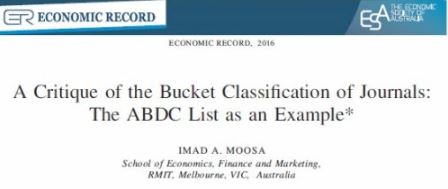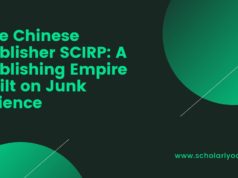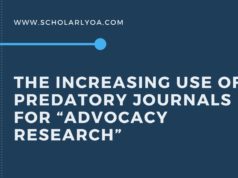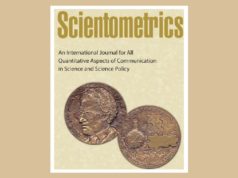
I just read an article [1] about a well-known journal whitelist by the brilliant Australian economist Imad A. Moosa. Entitled “A Critique of the Bucket Classification of Journals: The ABDC List as an Example,” the article examines the Australian Business Deans Council (ABDC) whitelist, showing its weaknesses.
Moosa finds,
The structure of the ABDC list gives rise to a kind of behavior that resembles regulatory arbitrage when academics publish in the lowest-quality journal within the same bucket of any discipline. By doing that, the researcher achieves the same performance and gets the same credit as when he publishes in the highest-ranked journal in the bucket (p. 12).
This is something I think about a lot. My lists are blacklists, journals I think researchers should avoid. Whitelists — or lists used as whitelists — include journals approved by a department, university, or government.

Whitelist Disadvantages
Here are some of what I find to be the disadvantages of journal whitelists:
- They encourage researchers to seek the “easiest” journals on the list (from Moosa, above), a disincentive to publishing in top journals
- They may not include high-quality “young” journals yet
- There are many whitelists and they do not all agree
- They regularly remove journals, affecting researchers who published in the removed journals
- When a pay-to-publish journal is added to a whitelist, it may raise its author fee, as demand goes up
- They may over-rely on publisher-supplied data, which can be glossed
Discussion
I am not opposed to the use of whitelists, especially those created at the university department level and incorporated into tenure criteria. One advantage is that journal whitelists provide an unambiguous goal for academic evaluation. If you are successful at publishing in the journal, you’ve met the criteria.
Unfortunately, competition among journals has made them less selective, especially author fee-journals.

DOAJ, the Directory of Open-Access Journals, was initially created to promote open access, an ideological tool. The 2013 Science sting exposed the folly of this approach. Directories, such as DOAJ and Ulrich’s, aren’t designed to function as whitelists, just as telephone directories are not lists of good people. In fact, ULRICHSweb Global Serials Directory aims to be comprehensive, so using it as a whitelist may be dangerous.
Some academic indexes, like Scopus, are created to serve as indexes of the scholarly literature. This is their primary purpose, but I think in many countries the scholarly index function has become the secondary use, and the chief use is as a whitelist.
Large “whitelists,” like Scopus, include tens of thousands of journals and always have a few bad apples. In the context of whitelists, these bad apples — very easy acceptance journals — become the sought-after prize for too many scholarly authors.
The only commercial service I know of that is designed to be a whitelist is Cabell’s, which is re-branding itself as “The Journal Whitelist.” It is professionally curated specifically as a whitelist.
Blacklists
The great advantage of journal blacklists is that they save researchers’ time. If a researcher is thinking about publishing in a journal, he or she can quickly check the blacklist. A bogus journal can be added immediately to a blacklist, and such lists help expose low-quality journals and publishers.
[1]. Moosa, Imad A. (2016, in press). A critique of the bucket classification of journals: The ABDC list as an example. Economic Record. http://doi.org/10.1111/1475-4932.12258










